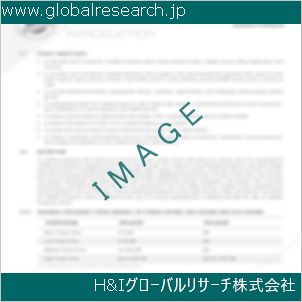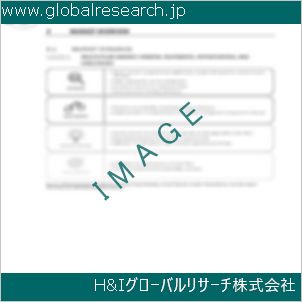Table of Contents
1 Industry Overview of Resorcinol
1.1 Definition and Specifications of Resorcinol
1.1.1 Definition of Resorcinol
1.1.2 Specifications of Resorcinol
1.2 Classification of Resorcinol
1.3 Applications of Resorcinol
1.3.1 Nuclear Application
1.3.2 Non-Nuclear Application
1.4 Industry Chain Structure of Resorcinol
1.5 Industry Overview and Major Regions Status of Resorcinol
1.5.1 Industry Overview of Resorcinol
1.5.2 Global Major Regions Status of Resorcinol
1.6 Industry Policy Analysis of Resorcinol
1.7 Industry News Analysis of Resorcinol
2 Manufacturing Cost Structure Analysis of Resorcinol
2.1 Raw Material Suppliers and Price Analysis of Resorcinol
2.2 Equipment Suppliers and Price Analysis of Resorcinol
2.3 Labor Cost Analysis of Resorcinol
2.4 Other Costs Analysis of Resorcinol
2.5 Manufacturing Cost Structure Analysis of Resorcinol
2.6 Manufacturing Process Analysis of Resorcinol
3 Technical Data and Manufacturing Plants Analysis of Resorcinol
3.1 Capacity and Commercial Production Date of Global Resorcinol Major Manufacturers in 2023
3.2 Manufacturing Plants Distribution of Global Resorcinol Major Manufacturers in 2023
3.3 R&D Status and Technology Source of Global Resorcinol Major Manufacturers in 2023
3.4 Raw Materials Sources Analysis of Global Resorcinol Major Manufacturers in 2023
4 Capacity, Production and Revenue Analysis of Resorcinol by Regions, Types and Manufacturers
4.1 Global Capacity, Production and Revenue of Resorcinol by Regions 2019-2024
4.2 Global and Major Regions Capacity, Production, Revenue and Growth Rate of Resorcinol 2019-2024
4.3 Global Capacity, Production and Revenue of Resorcinol by Types 2019-2024
4.4 Global Capacity, Production and Revenue of Resorcinol by Manufacturers 2019-2024
5 Price, Cost, Gross and Gross Margin Analysis of Resorcinol by Regions, Types and Manufacturers
5.1 Price, Cost, Gross and Gross Margin Analysis of Resorcinol by Regions 2019-2024
5.2 Price, Cost, Gross and Gross Margin Analysis of Resorcinol by Types 2019-2024
5.3 Price, Cost, Gross and Gross Margin Analysis of Resorcinol by Manufacturers 2019-2024
6 Consumption Volume, Consumption Value and Sale Price Analysis of Resorcinol by Regions, Types and Applications
6.1 Global Consumption Volume and Consumption Value of Resorcinol by Regions 2019-2024
6.2 Global and Major Regions Consumption Volume, Consumption Value and Growth Rate of Resorcinol 2019-2024
6.3 Global Consumption Volume and Consumption Value of Resorcinol by Types 2019-2024
6.4 Global Consumption Volume and Consumption Value of Resorcinol by Applications 2019-2024
6.5 Sale Price of Resorcinol by Regions 2019-2024
6.6 Sale Price of Resorcinol by Types 2019-2024
6.7 Sale Price of Resorcinol by Applications 2019-2024
6.8 Market Share Analysis of Resorcinol by Different Sale Price Levels
7 Supply, Import, Export and Consumption Analysis of Resorcinol
7.1 Supply, Consumption and Gap of Resorcinol 2019-2024
7.2 Global Capacity, Production, Price, Cost, Revenue, Supply, Import, Export and Consumption of Resorcinol 2019-2024
7.3 USA Capacity, Production, Price, Cost, Revenue, Supply, Import, Export and Consumption of Resorcinol 2019-2024
7.4 EU Capacity, Production, Price, Cost, Revenue, Supply, Import, Export and Consumption of Resorcinol 2019-2024
7.5 China Capacity, Production, Price, Cost, Revenue, Supply, Import, Export and Consumption of Resorcinol 2019-2024
7.6 Japan Capacity, Production, Price, Cost, Revenue, Supply, Import, Export and Consumption of Resorcinol 2019-2024
8 Major Manufacturers Analysis of Resorcinol
8.1 Manufacturer One
8.1.1 Company Profile
8.1.2 Product Picture and Specifications
8.1.2.1 Type I
8.1.2.2 Type II
8.1.2.3 Type III
8.1.3 Capacity, Production, Price, Cost, Gross and Revenue
8.1.4 Contact Information
8.2 Manufacturer Two
8.2.1 Company Profile
8.2.2 Product Picture and Specifications
8.2.2.1 Type I
8.2.2.2 Type II
8.2.2.3 Type III
8.2.3 Capacity, Production, Price, Cost, Gross and Revenue
8.2.4 Contact Information
8.3 Manufacturer Three
8.3.1 Company Profile
8.3.2 Product Picture and Specifications
8.3.2.1 Type I
8.3.2.2 Type II
8.3.2.3 Type III
8.3.3 Capacity, Production, Price, Cost, Gross and Revenue
8.3.4 Contact Information
8.4 Manufacturer Four
8.4.1 Company Profile
8.4.2 Product Picture and Specifications
8.4.2.1 Type I
8.4.2.2 Type II
8.4.2.3 Type III
8.4.3 Capacity, Production, Price, Cost, Gross and Revenue
8.4.4 Contact Information
8.5 Manufacturer Five
8.5.1 Company Profile
8.5.2 Product Picture and Specifications
8.5.2.1 Type I
8.5.2.2 Type II
8.5.2.3 Type III
8.5.3 Capacity, Production, Price, Cost, Gross and Revenue
8.5.4 Contact Information
…
9 Marketing Trader or Distributor Analysis of Resorcinol
9.1 Marketing Channels Status of Resorcinol
9.2 Traders or Distributors with Contact Information of Resorcinol by Regions
9.3 Ex-work Price, Channel Price and End Buyer Price Analysis of Resorcinol
9.4 Regional Import, Export and Trade Analysis of Resorcinol
10 Industry Chain Analysis of Resorcinol
10.1 Upstream Major Raw Materials Suppliers Analysis of Resorcinol
10.1.1 Major Raw Materials Suppliers with Contact Information Analysis of Resorcinol
10.1.2 Major Raw Materials Suppliers with Supply Volume Analysis of Resorcinol by Regions
10.2 Upstream Major Equipment Suppliers Analysis of Resorcinol
10.2.1 Major Equipment Suppliers with Contact Information Analysis of Resorcinol
10.2.2 Major Equipment Suppliers with Product Pictures Analysis of Resorcinol by Regions
10.3 Downstream Major Consumers Analysis of Resorcinol
10.3.1 Major Consumers with Contact Information Analysis of Resorcinol
10.3.2 Major Consumers with Consumption Volume Analysis of Resorcinol by Regions
10.4 Supply Chain Relationship Analysis of Resorcinol
11 Development Trend of Analysis of Resorcinol
11.1 Capacity, Production and Revenue Forecast of Resorcinol by Regions and Types
11.1.1 Global Capacity, Production and Revenue of Resorcinol by Regions 2024-2029
11.1.2 Global and Major Regions Capacity, Production, Revenue and Growth Rate of Resorcinol 2024-2029
11.1.3 Global Capacity, Production and Revenue of Resorcinol by Types 2024-2029
11.2 Consumption Volume and Consumption Value Forecast of Resorcinol by Regions, Types and Applications
11.2.1 Global Consumption Volume and Consumption Value of Resorcinol by Regions 2024-2029
11.2.2 Global and Major Regions Consumption Volume, Consumption Value and Growth Rate of Resorcinol 2024-2029
11.2.3 Global Consumption Volume and Consumption Value of Resorcinol by Types 2024-2029
11.2.4 Global Consumption Volume and Consumption Value of Resorcinol by Applications 2024-2029
11.3 Supply, Import, Export and Consumption Forecast of Resorcinol
11.3.1 Supply, Consumption and Gap of Resorcinol 2024-2029
11.3.2 Global Capacity, Production, Price, Cost, Revenue, Supply, Import, Export and Consumption of Resorcinol 2024-2029
11.3.3 USA Capacity, Production, Price, Cost, Revenue, Supply, Import, Export and Consumption of Resorcinol 2024-2029
11.3.4 EU Capacity, Production, Price, Cost, Revenue, Supply, Import, Export and Consumption of Resorcinol 2024-2029
11.3.5 China Capacity, Production, Price, Cost, Revenue, Supply, Import, Export and Consumption of Resorcinol 2024-2029
11.3.6 Japan Capacity, Production, Price, Cost, Revenue, Supply, Import, Export and Consumption of Resorcinol 2024-2029
12 New Project Investment Feasibility Analysis of Resorcinol
12.1 New Project SWOT Analysis of Resorcinol
12.2 New Project Investment Feasibility Analysis of Resorcinol
13 Conclusion of the Global Resorcinol (CAS 108-46-3) Industry 2024 Market Research Report
| ※参考情報 レゾルシノール(Resorcinol)は、有機化合物の一種であり、化学式C6H6O2で示される二価のフェノール類に分類される物質です。CAS番号は108-46-3です。レゾルシノールは、分子内に二つの水酸基(-OH)を持つことで特徴づけられ、これが他の化合物と反応する際の化学的性質に大きく影響を与えます。 レゾルシノールは、主に白色の結晶性固体として存在し、特有の香りを有しています。水に可溶であり、アルコールやエーテル、その他の有機溶媒にも溶けやすい性質があります。この物質は、特にその反応性や溶解性から、化学合成や製造プロセスにおいて多用途に利用されています。 レゾルシノールは、さまざまな用途があります。最も一般的な用途の一つは、医薬品の製造です。抗菌剤や抗真菌剤としての特性により、皮膚病の治療に用いることができます。また、レゾルシノールは、皮膚の状態を改善するための製品や、アセトアミノフェンやその他の鎮痛剤の合成中間体としても利用されています。 さらに、レゾルシノールは、化粧品業界でも重要な成分として利用されています。特に、ニキビや皮膚の炎症を抑えるためのスキンケア製品や、脱毛剤、抗老化製品において、活性成分として効果を発揮します。その抗菌特性と収斂作用により、皮脂腺の活性を抑制し、毛穴の黒ずみやニキビの原因となるバイ菌の活動を抑えるのです。 さらに、レゾルシノールは、合成樹脂や接着剤の製造にも利用されています。特に、メラミン樹脂やフェノール樹脂の合成において重要な役割を果たします。これらの樹脂は、高い耐熱性や耐久性を持ち、さまざまな産業において用途が広がっています。特に自動車産業や電子機器の製造において、軽量で強靭な素材を提供するための重要な要素となっています。 また、レゾルシノールは染料や顔料の製造にも利用されます。特に、特定の色素を合成するための中間体として、また、化学的に安定した色合いを持つ染料を作る際に使用されます。このため、テキスタイルや塗料業界における存在感も大きいと言えます。 環境への配慮が高まる現代においては、レゾルシノールの利用に関する研究や開発が進められています。合成ルートの改善や新しい応用分野の開拓が期待され、持続可能な開発を目指す上での関連技術も進展しています。例えば、植物由来の原料を用いた合成方法の研究が進み、環境負荷の軽減に寄与することが期待されています。 ただし、レゾルシノールには注意が必要な点もあります。その一つは、皮膚や目への刺激性があるため、取り扱いには十分な注意が求められます。また、長期的な暴露による健康への影響も懸念されているため、取り扱いや使用には適切な安全対策が必要とされています。 総じて、レゾルシノールは、その特性と多様な用途から、化学産業や医療、美容、環境技術などにおいて重要な役割を果たしている物質です。今後も研究と開発が続けられる中で、新しい応用や環境への配慮を考慮した技術の進展が期待されます。 |
❖ 免責事項 ❖
http://www.globalresearch.jp/disclaimer












